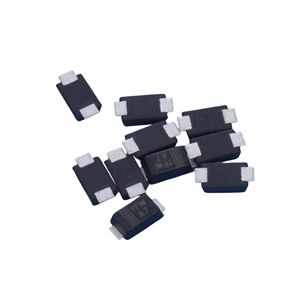Date:2024-09-26 Categories:Product knowledge Hits:348 From: Guangdong Youfeng Microelectronics Co., Ltd(YFW)
Diodes are very common in circuit applications. To achieve breakthrough improvements in your devices, it is necessary to start by understanding diodes in a more scientific way.
1. Function
The main characteristic of a diode is its unidirectional conductivity, which means that under the action of forward voltage, the on resistance is very small; Under the action of reverse voltage, the conduction resistance is extremely high or infinite.
Diodes are divided into crystal diodes, bidirectional trigger diodes, high-frequency variable resistance diodes, variable capacitance diodes, generator diodes, and Schottky diodes according to their applications.
2. Identification method
The identification of diodes is very simple. The N pole (negative pole) of low-power diodes is mostly marked with a color circle on the diode meter. Some diodes are also marked with diode specific symbols as "P" and "N" to determine the polarity of the diode,
The positive and negative terminals of a light-emitting diode can be identified by the length of its pins, with the long pin being positive and the short pin being negative.
3. Testing precautions
When using a digital multimeter to measure a diode, connect the red probe to the positive terminal of the diode and the black probe to the negative terminal of the diode. At this point, the measured resistance is the forward conduction resistance of the diode, which is exactly the opposite of the probe connection method of a pointer multimeter.
4. Fault characteristics
The faults of diodes mainly manifest as open circuits, short circuits, and unstable voltage regulation. Among these three types of faults, the former one shows an increase in power supply voltage; The worry about the future is that the fault manifests as the power supply voltage dropping to zero volts or unstable output.

Previous: Classification, Structure, and Principle of MOSFET
Next: Using voltage inspection method to quickly locate fault points in integrated circuits